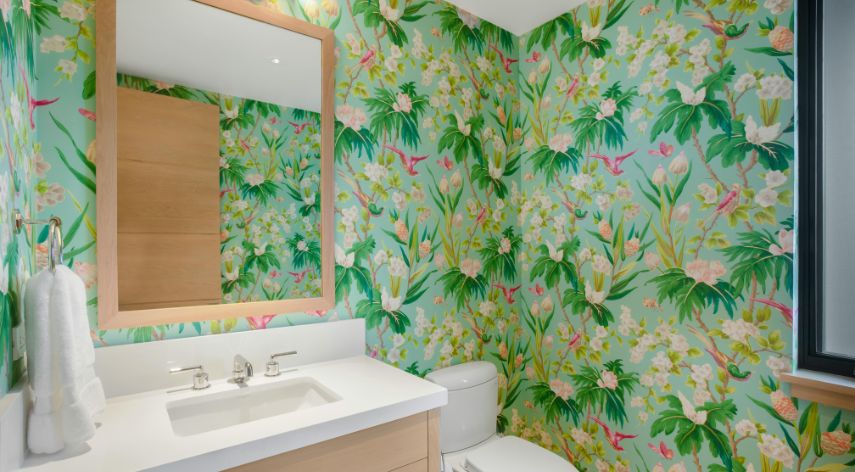The Importance of Creating a Natural Hairline with Hair Transplant Surgery
With the advancement of medical technologies, people are becoming more aware of the recent upgrades to cosmetic procedures, especially when it comes to hair restoration surgeries. However, most people still don’t want others to know that they have undergone any such surgery, and thus, it becomes crucial to opt for professionals who have years of experience to get the best results.
When we speak about a hair transplant surgery, the one factor that can be a dead giveaway for the procedure is the positioning of the hairline. The natural hairline restoration can give any patient a more defined look, thereby making it impossible for others to note that one has undergone the surgery, in the first place.
Table of Contents
ToggleWhy Create a Natural Hairline with Hair Transplant Surgery?
As the primary element of a successful hair transplant, the creation of a natural hairline is an important aspect. It helps restore the natural look of the scalp and conceals the fact that one has undergone such a procedure to a large extent. The success of a hair transplant surgery doesn’t only depend on the density of hair the patient sees after complete recovery but also is measured by how inconspicuous the results look. The expertise of the surgeon ensures that the individual follicular grafts are placed precisely along the patient’s natural hairline, thereby restoring their look.
So, What Does the Natural Hairline Look Like?
To put things in simple terms, there is no universal standard on how the natural hairline looks in people. The most common types of hairline depend on the patient and how he or she wants the look to be. Some people have a naturally lower hairline that covers most of their forehead, while others have a broader forehead with a high hairline.
Every hairline, be it lower or higher, is normal for you as a person till it starts receding. The receding hairline around the temples is a common sign of Androgenetic Alopecia (genetic hair loss) seen in men in the form of pattern baldness. The one thing that you would have to note here is that it is a gradual process and the receding hairline isn’t visible in a day which gains visibility over quite some time. Women also face this issue when they are suffering from an extreme case of hair loss.
The Most Common Types of Natural Hairline
As mentioned earlier, there are several types of hairline naturally found in men and women. The most common types of which include:
- The Low Hairline: Individuals with this type of hairline starts closer to the eyebrows and then moves on to cover almost half of the forehead. This results in a smaller and more defined look to the face shape. The receding hairline in those with low hairline is less visible than the others.
- The Middle Hairline: More commonly known as the ‘normal’ hairline, individuals with this type have a hairline starting from the upper-middle portion of the forehead. This results in an M-shaped receding hairline which starts becoming visible gradually.
- The Straight Hairline: Individuals with this type of hairline is unlike the others which follow the shape of the head as it has a perpendicular shape along the side, commonly seen in men.
- The High Hairline: Needless to say, this is the one type of hairline that shows visible receding lines. Individuals with this type have a hairline that starts from the crown of the head.
- The Triangular Hairline: This type of hairline starts from the sides and lower part of the temples and slowly raises to the centre of the head.
Apart from these top 5 types, people might also have a cowlick hairline in which a few sections of hair growth is seen, different from the normal direction of hair growth on the scalp. However, when it comes to undergoing a hair transplant procedure, professionals define the natural hairline designing into three distinct parts:
- The Frontal Tuft: This section is situated in the central position of the defined zone where the maximum number of follicles is implanted to achieve a more voluminous look.
- The Define Zone: This section is situated right behind the transition zone and typically covers a surface area of 2 to 3cms where grafts that contain 2 to 3 hairs are implanted.
- The Transition Zone: This section includes the first 0.5 to 1cm of the hairline and is thus one of the most important parts of hairline designs. The inclusion of micro irregularity is crucial at this point to get a natural-looking result post-surgery. In this transition zone, multiple V-patters are drawn as part of hairline designing to indicate the implantation of individual follicles in this zone.
What are the Criteria for Getting a Natural Hairline during Hair Transplant Surgery?
Now that you are aware of how the natural hairline is supposed to look like, it is time to know how hair transplant surgery can help you get the perfect hairline:
- The Angle and Direction: The degree of elevation of the hair when it is growing from the scalp is known as the angle of the hairline. The direction, however, is how the hair points from the scalp. When it comes to these two factors, there is a slight difference between the temporal and the frontal hairline. Ideally, the hair present at the frontal hairline is angled at 10 to 15 degrees, but the ones at the temporal hairline are angled towards the ear.
- The Anterior Border: Once the hairline angle and direction has been defined, the surgeon moves on to drawing the anterior border of the hairline, especially for those who don’t want the hairline to be too low. The factors that are to be considered while drawing the anterior border involves keeping a safe distance of around 10 cm from the glabella, maintaining a width of 4 fingers from the same, and keeping a consistent design.
Why Contact Professionals for the Ideal Results from Hair Transplant Surgery?
Hair transplant surgery is an extensive procedure that includes various steps, the first of which is about consulting highly-trained professionals to get as natural results without any side effects as possible. Two of the most successful doctors for the same are Dr Satya Kumar Saraswat and Dr Preeti Saraswat, both of whom are practising at Twachaa by Saraswat™.
With more than 17 years of experience in the field and certifications by several international boards such as the American Board of Hair Restoration Surgery (ABHRS), the doctors ensure that they are updated with all the modern developments in the field. The centre has the best after-care team of experts who guide every patient through the entire recovery period.
In Conclusion:
Designing and drawing the hairline are two of the most fundamental parts of the hair transplant procedure, and consulting a professional for the best hair transplant in Faridabad and Gurgaon (Gurugram), India,would ensure you get natural results. In case you want to know more, feel free to book a consultation with the experts today. Dial +91-92052 52523 / +91-7011960082 or write to info@twachaa.com for more details.
Recommended For You
Spread the loveBathroom Wallpaper The Bathrooms- our home’s most fun-functional space often goes unnoticed while designing the house. However, this
Spread the loveWhen it comes to understanding temperature, Celsius and Fahrenheit are the two most commonly used scales around the world. The Celsius scale is primarily used in most countries, while the Fahrenheit scale is popular in the United States. If you’ve ever come across a temperature given in Celsius and wondered how it translates to Fahrenheit, you’re in the right place. This article will guide you through the process of converting 19 degrees Celsius to Fahrenheit, using simple formulas and steps. The Celsius Scale The Celsius scale, also known as the centigrade scale, is a metric system temperature scale based on the freezing and boiling points of water. On this scale, water freezes at 0 degrees Celsius and boils at 100 degrees Celsius under standard atmospheric conditions. This scale is widely used in scientific contexts and by most of the world for everyday temperature measurements. The Fahrenheit Scale The Fahrenheit scale, on the other hand, was developed by Daniel Gabriel Fahrenheit in the early 18th century. In this scale, the freezing point of water is 32 degrees Fahrenheit, and the boiling point is 212 degrees Fahrenheit. This scale is still commonly used in the United States for weather forecasts and some cooking measurements. The Formula for Conversion Converting temperatures between Celsius and Fahrenheit involves a specific formula. The formula to convert from Celsius to Fahrenheit is: [ \text{F} = \left( \text{C} \times \frac{9}{5} \right) + 32 ] Where: ( \text{F} ) represents the temperature in Fahrenheit ( \text{C} ) represents the temperature in Celsius By using this formula, you can easily convert any temperature from Celsius to Fahrenheit. Step-by-Step Conversion of 19 Degrees Celsius to Fahrenheit Let’s walk through the process of converting 19 degrees Celsius to Fahrenheit using the formula mentioned above. Step 1: Multiply by 9 First, take the temperature in Celsius (19 degrees) and multiply it by 9. [ 19 \times 9 = 171 ] Step 2: Divide by 5
Spread the loveIn the bustling streets of London, where competition is fierce and opportunities are abundant, businesses need every edge

.jpg)



